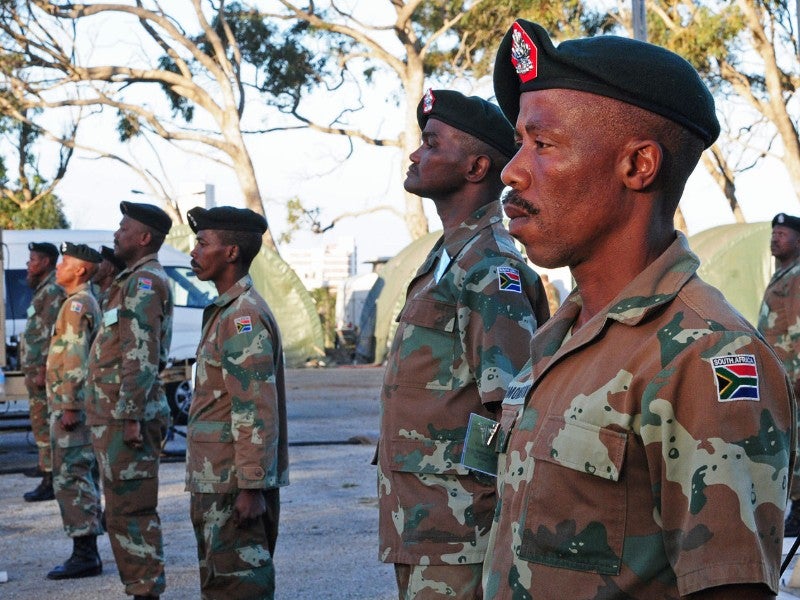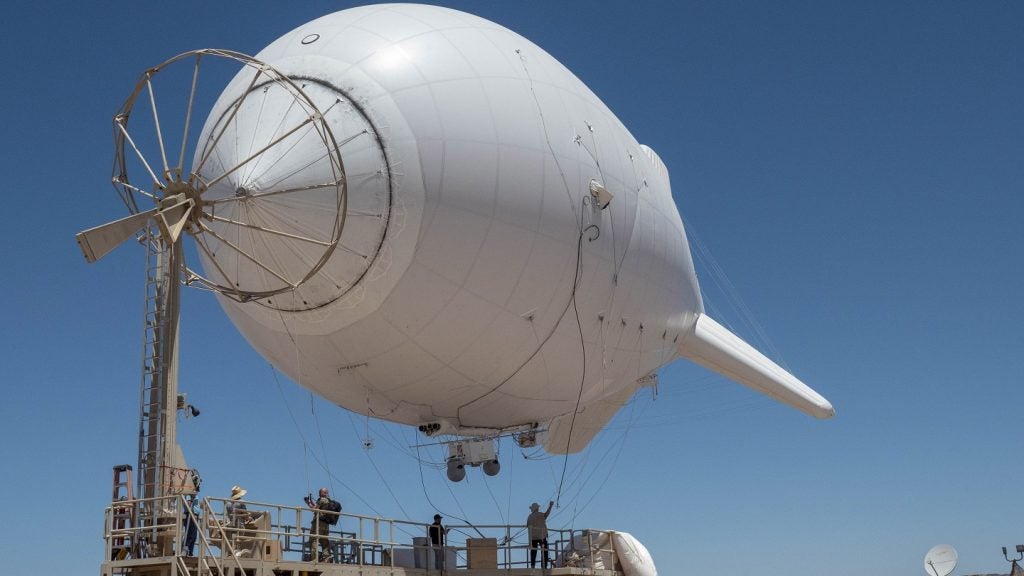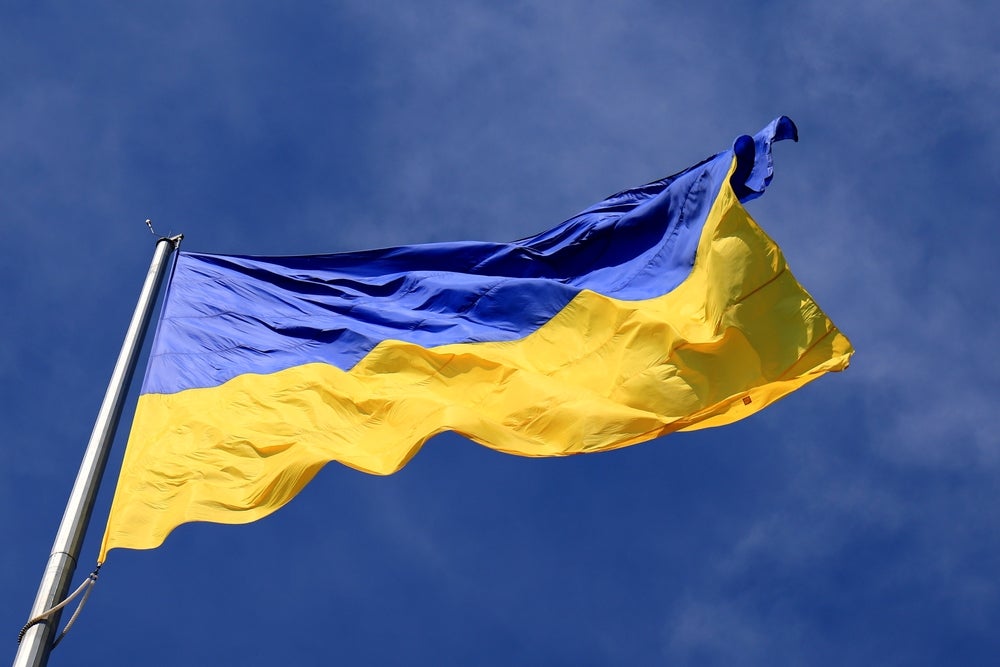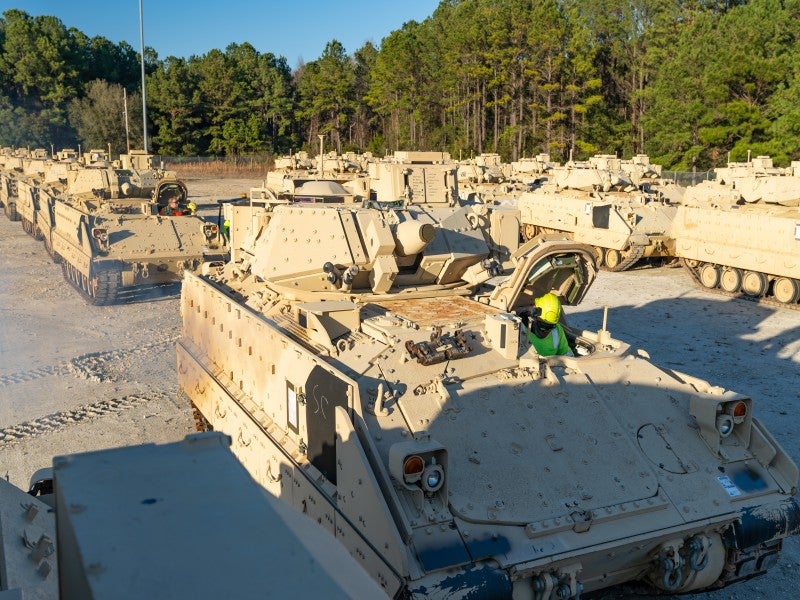
South African military spending has historically been largely influenced by the 23-year-long Namibian War of Independence between 1966 and 1990. Since 1988, South African military spending in real terms was on the decline until 2001, when it began to rise again until 2015.
From 2015 to 2018, military expenditure has started to fall again. In current prices, South Africa spent R$48.21bn ($3.64bn), or around 1% of the nation’s gross domestic product (GDP).
With help from the SIPRI Military Expenditure Database, we look at the key events that have shaped South African military spending and the current projects are in development that could affect expenditure in the near future.
South African military spending: Historical trends (1988-2018)
Since the Namibian War of Independence ended, military expenditure in South Africa experienced a sustained period of decline.
“South African military spending since 1988 displays a U-shaped curve,” says Dr Nan Tian, a SIPRI researcher with the Arms and Military Expenditure programme.
“Spending fell from about 1988 to 1999 as part of the disarming (termination of South African nuclear weapons) and establishing civilian control of the military post-apartheid. The end of the 1980s and beginning of 1990s was also one of worst economic recessions in South Africa. These factors together led to a decrease in spending.”
How well do you really know your competitors?
Access the most comprehensive Company Profiles on the market, powered by GlobalData. Save hours of research. Gain competitive edge.

Thank you!
Your download email will arrive shortly
Not ready to buy yet? Download a free sample
We are confident about the unique quality of our Company Profiles. However, we want you to make the most beneficial decision for your business, so we offer a free sample that you can download by submitting the below form
By GlobalDataIn 1999, the South African Department of Defence (DoD) signed the Strategic Defence Acquisition with the African National Congress led by Nelson Mandela, then worth R$30bn, for the procurement of military weaponry and equipment such as naval corvettes, helicopters and fighter aircraft.
On South Africa’s behalf, the ANC signed contracts with defence firms in Germany, Italy, Sweden, the UK, and France, as well as some South African defence companies.
Tian says: “Spending increased between 1999 and 2012, partly because of the major arms deal in 1999 and improvements in the economy. Spending has flattened since 2012 (with some minor decreases) as the country has grapples poor economic conditions and overspending in the general budget.”
2018 figures: continued decline since 2015 peak
According to the SIPRI report, South African Military spending fell in real terms from $3.64bn in 2017 to $3.45bn in 2018, as it has done since peaking at $3.74bn 2015.
In terms of GDP, however, South Africa’s proportionate spending has remained fairly consistent since 2010, remaining at 1.1% of GDP until 2017. This is a considerable fall from the 1988 high of 4.6% or even the 1994 peak of 2.8%.
During the opening speech of the Defence and Military Veterans Budget Vote in May 2018, Minister for Defence and Military Veterans Nosiviwe Mapisa-Nqakula said: “South Africa is a peaceful country that lives in harmony with its neighbours. However, the unpredictability of the strategic environment, together with emerging conflict trends on the African continent, requires us to maintain a credible military force as a deterrent.
“Some of the countries in the SADC [Southern African Development Community] are injecting financial resources to build their military capacity through acquisition programmes. Conversely, South Africa is on a path of reduced defence expenditure.”
Future of South African military spending
What could shape military spending in the near future?
Tian says: “The SA cabinet has been looking to further cut the military spending. It looks to decrease the number of people working in government service which includes national defence force.
“The country is also looking to reduce in areas such as Special Defence Account and various goods and service items such as computer services, contractors and travel and subsistence. Overall, there is expectation that spending will decrease in the near future.”
Despite the likely continuation of defence budget cuts, there are still some potential investments to be made in the South African military.
For example, the DoD’s Defence Technology Enterprise Development programme, managed by South African defence procurement agency Armscor and the Council for Scientific and Industrial Research, plans to create a minimum of 20 new black-owned defence small and medium-sized enterprises by 2023, according to Engineering News.
Furthermore, South Africa’s Navy is planning to buy more ships and patrol vessels under Operation Phakisa, and the Air Force is looking to upgrade its Rooivalk attack helicopter, potentially replacing it with the Rooivalk Mark 2.
Whether these projects will require additional funding or can be absorbed despite the perceived budget cuts remains to be seen.







